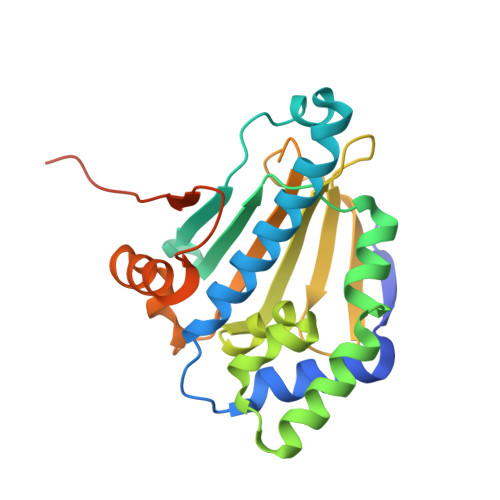Structural Insights into Selectively Targeting Candida albicans Hsp90.
Kowalewski, M.E., Zagler, S., Redinbo, M.R.(2025) Biochemistry 64: 2401-2411
- PubMed: 40397669
- DOI: https://doi.org/10.1021/acs.biochem.5c00015
- Primary Citation of Related Structures:
9MSQ, 9MSU, 9MSV, 9MSX, 9MT3, 9MT9, 9MTB - PubMed Abstract:
The threat of drug-resistant pathogens continues to rise and underscores the need for new antimicrobial and antifungal strategies. Diverse chemical scaffolds have been shown with high affinity to bind the human heat-shock protein Hsp90. Orthologous proteins are present in microbial pathogens and have been shown to be particularly abundant in these organisms, suggesting they may serve as therapeutic targets. Here, we examine the potency and selectivity of human Hsp90 ligands for their capacity to bind to the nucleotide binding domain of Hsp90 from the pathogenic fungi, Candida albicans . Using a series of biochemical, structural, and fragment and in silico screening investigations, we define key chemical features that lead to effective C. albicans Hsp90 (CaHsp90) binding. We support these studies with crystal structures of five diverse human Hsp90 ligands in complex with CaHsp90, as well as the structure of this protein with a nonhydrolyzable ATP analog. We demonstrate the structural basis for the selectivity of the human Hsp90 inhibitor TAS116 for CaHsp90, features that may be exploited in the future development of improved CaHsp90 inhibitors.
Organizational Affiliation:
Department of Biochemistry and Biophysics, University of North Carolina, Chapel Hill, North Carolina 27599, United States.

















